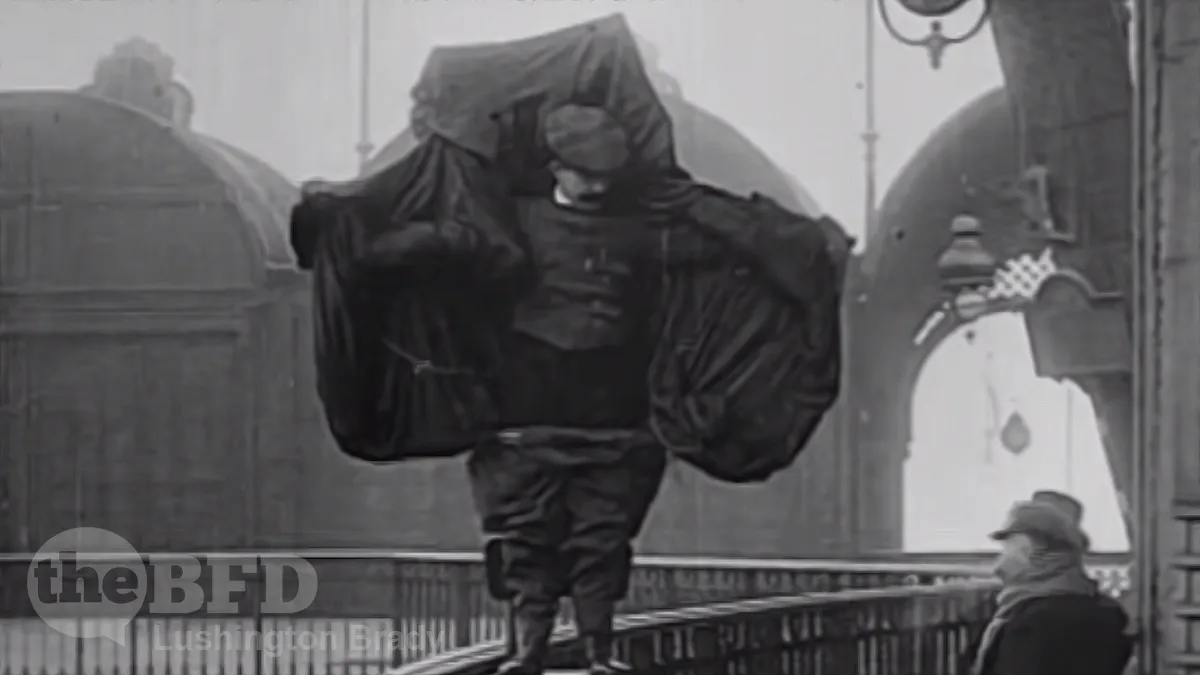Table of Contents
As we’ve seen [here], there are plenty of inventions that left their creators with lasting regret. But at least Robert Propst didn’t end up crushed under one of his own office cubicles. Many other inventors weren’t quite so lucky.
Here are just some of the inventors who might have lived to regret their inventions, if they’d lived past their inventions.
The invention of the internal combustion engine in the 19th century led to not just the automobile age, but a whole host of other, spinoff inventions. One of these was the moped. It was in 1903 that a young engineer with General Electric named William Nelson came up with the idea of fixing a motor to a standard bicycle. On a gloomy October day, Nelson demonstrated his invention for the first – and last – time. His invention worked, but too well: flying downhill, Nelson came off his bike and was killed instantly.
Just nine years later, another inventor, on the other side of the Atlantic, similarly learned the hard way the perils of demonstrating your own contraption. Franz Reichalt was a tailor, but not an engineer. So, when he stitched together a bunch of old overcoats and called it a “parachute suit”, cautioned might have been advised in testing it.
Merde! to that. With typical Gallic elan, Reichelt climbed to the top of the Eiffel Tower in 1912 and, before the eyes and cameras of the assembled press, leapt to his unintentional death.
Thomas Midgley Jr is best known for coming up with fuel additives in order to stop automobiles knocking like a popcorn machine. But that’s not what killed him. Neither were chlorofluorocarbons (CFCs), another of his inventions.
What killed Midgley in the end was a device he built to cope with the polio that crippled him in later life. He devised a harness and pulley system to help him get out of bed. Trying to get into his wheelchair one day in 1944, he became entangled in the contraption and strangled himself.
Another defining transportation invention of the modern era is the aeroplane. Planes and cars: ever since they were both invented, people have dreamed of combining them. We still don’t have flying cars, though: possibly because so many prototypes killed their inventors.
One of the weirdest ideas dates back to the ’20s and Soviet Russia, home of many wacky ideas, like Lysenkoism. Valerian Abakovsky was an engineer who, in the “egalitarian” spirit of communism worked as a chauffeur for the Cheka, predecessor of the NKVD and KGB. Abakovsky, perhaps utilising his nomenklatura connections, convinced the Soviets to green-light his truly insane “Aerowagon”, a propellor-driven train-car.
It worked… sort of. It certainly went fast – too fast. On its first run it derailed at high speed, killing its inventor and seven high-ranking communist officials. So, at least it did some good, I guess.
But the dream of the flying car refused to die. In the 1970s, inventors Henry Smolinski and Hal Blake came up with the idea of strapping detachable wings and a Cessna propellor on to a regular car. The car they chose was the Ford Pinto. Yes, that Pinto: possibly the most dangerous automobile ever mass-produced – notoriously prone to exploding into flames at the slightest nudge.
So, the flying Pinto ended about as well as you’d predict. But it didn’t burst into flames in mid-air, as you might have thought. Instead, its detachable wings… detached. In mid-air. The suddenly non-flying car hurtled to the ground, where it presumably burst into flames as God intended Pintos to do.
Speaking of defining discoveries of the modern age, atomic energy defined the 20th century possibly like no other discovery. But even before Hiroshima, the humble atom was wreaking havoc on inventors.
In the early 20th century Sabin Arnold von Sochocky invented the glow-in-the-dark paint that illuminated watches and clocks everywhere. But Sochocky had bigger dreams than humble clock dials. He envisaged entire houses bathed in the green glow of his “Undark” paint.
But that never happened. Probably because the secret to Undark’s luminescence was radium. Radioactive radium. The first victims of Sochocky’s invention were the mostly young women workers who applied the paint with fine brushes – which they invariably licked, to keep a nice point on them. That soon lead to a horrifying condition called “radium necrosis”, which ate away the victims’ jaws.
Sochocky himself unsurprisingly succumbed to radiation poisoning in 1928.
Even with the cautionary tale of “radium jaw” still fresh, inventors and scientists continued to be dangerously cavalier with radiation. Even when they were building the atomic bomb.
Louis Slotin was one of the leading engineers on the Manhattan Project. As we all know, an atomic bomb essentially works by bringing together a “critical mass” of radioactive material, such as plutonium, to generate a runaway reaction. Slotin was considered to be the guy for handling dangerous quantities of plutonium.
But he got a little carried away with his own reputation, perhaps. One of Slotin’s radioactive party tricks was “tickling the dragon’s tail”: his own name for bringing the core of a nuclear bomb to the very brink of a critical reaction. The core was known as the “demon core”, which is probably the first clue that you don’t screw around with it. But not our dragon-tickling hero.
In May 1946, Slotin was showing off his dragon-tickling skills when it all went very, very wong. Witnesses saw an exciting flash of blue light – Cherenkov radiation. A whole lot of Cherenkov radiation.
In the frantic medical examinations afterwards, it transpired that Slotin had received four times the lethal dose of radiation. One medical expert described his condition as internal “three-dimensional sunburns”. But, as anyone who’s seen Chernobyl will know, far worse was in store. Slotin suffered an “agonizing sequence of radiation-induced traumas” which are best left undescribed. It took the scientist four agonising days to die.
Lesson learned: don’t muck around with radiation.
In fact, should you come up with any brilliant new, but dangerous invention, get someone else to test it.









